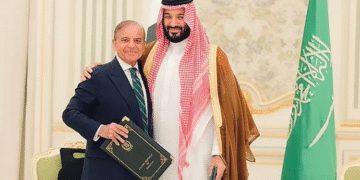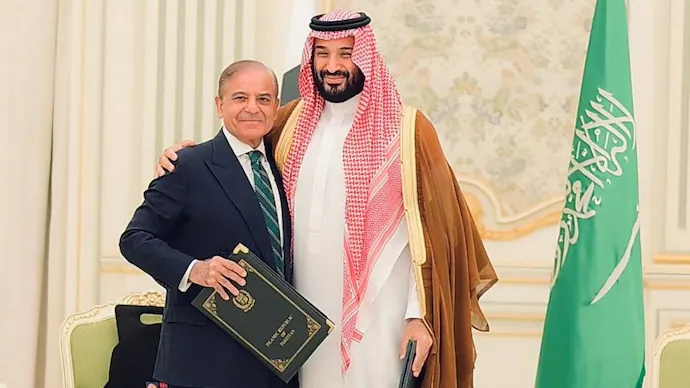A Pact Not Just Born of Urgency, but Reputation
In Riyadh on September 17, 2025, the air seemed charged with something more than diplomacy. Pakistani Prime Minister Shehbaz Sharif and Saudi Crown Prince Mohammed bin Salman met under the grand lights of Al-Yamamah Palace and signed what many are calling a milestone: the Strategic Mutual Defence Agreement.
The core promise is simple on paper yet heavy in meaning: if either country is attacked, the other will treat it as an attack on itself. It’s a pledge rooted in long friendship, decades of military cooperation, and shared concerns over security in a volatile Middle East.
What Exactly Did They Agree On
The agreement goes beyond ceremonial handshakes.
- It formalises joint deterrence—that is, both nations commit to bolstering their defense capacities to discourage aggression.
- It expands cooperation in military training, intelligence sharing, possibly defense production.
- It is built on a foundation of nearly eight decades of Pakistan-Saudi relations, which include training of Saudi armed personnel by Pakistan, previous military exercises, and energy and aid ties.
What isn’t yet public are the specific operational details: the thresholds for invoking mutual defence, what kind of military support would be provided, where the troops might be stationed, or whether nuclear deterrence is explicitly part of the framework. There are hints that all means necessary will be considered depending on the threat, but official clarity is still pending.
Why Now? The Pressure, The Pivot, The Paradox
Several forces seem to have pushed this pact from conversation into reality:
- Regional anxieties are running high. The recent Israeli airstrike on Doha, Qatar during ceasefire talks raised concerns among Gulf states about cascading instability.
- Gulf countries are increasingly questioning the reliability of traditional security backers. The idea of depending solely on the U.S. for guarantees feels riskier to some.
- For Pakistan, the agreement is a way to cement its role as a regional security player, not just a recipient of alliances. For Saudi Arabia, it widens the circle of strategic partners, arguably in response to the shifting sands of Middle East conflict and diplomatic realignments.
What It Means for the Future
This pact may be more than ink on paper. It weaves into a larger pattern:
- Pakistan might gain stronger backing to modernize its military capabilities, potentially accessing new resources or technology.
- Saudi Arabia may be signaling its intention to diversify its defense relationships beyond long-standing U.S. dependence.
- Regionally, this could catalyze similar defence agreements—or it might push rival states to fortify their own security frameworks, raising risks of arms buildups and competition.
















